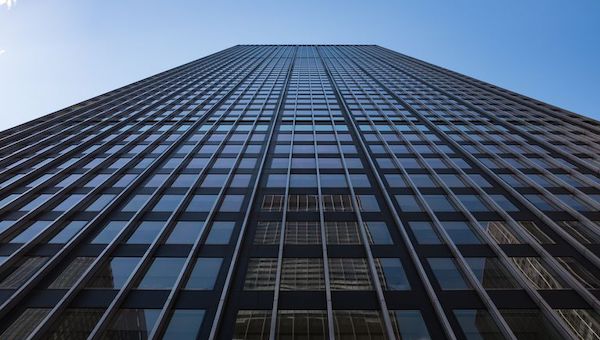
THE REUSE IMPERATIVE: WHY SAVING EXISTING BUILDINGS MATTERS MORE THAN EVER
BY: LLOYD ALTER & FACT CHECKED BY: HALEY MASTSITE: TREEHUGGER
TRENDING
Activism
Belief
Big Pharma
Conspiracy
Cult
Culture
Economy
Education
Entertainment
Environment
Global
Government
Health
Hi Tech
Politics
Prophecy
Science
Social Climate
Universe
War
Ten years ago I wrote my first post on Treehugger about embodied energy and the importance of renovating old buildings instead of demolishing them, titled " Embodied Energy and Green Building: Does It Matter? " At the time I wasn't quite sure that it did, considering it a "sunk cost," water under the bridge, done and gone. It took a while but I finally figured it out, that it had nothing to do with the embodied energy of the existing building, but of its replacement:
"Preserving and upgrading a building is far more energy- and carbon-efficient than knocking it down and building new. Calling the new building 'green' when it replaces an existing building is a farce when it takes so much energy to build. But what matters is the embodied energy of the future building, not the past."
Ten years later, much has changed. We got a Paris Agreement, with its limits on the cumulative amount of carbon that can be put into the atmosphere to keep the climate from heating more than 2.7 degrees Fahrenheit (1.5 degrees Celsius) and it's not very much carbon at all.
In a recent post, " Why We Fight to Save Every Old Building ," I tried to explain my default position that every existing building should be renovated, expanded, repurposed, or reinvented before it is demolished and replaced. After reading it, Jim Lindberg, senior policy director at the National Trust for Historic Preservation, pointed me to an article, " The Reuse Imperative ," where he wrote how an understanding of embodied and upfront carbon changes how we think about buildings:
“The urgency of reducing embodied carbon emissions inverts common perceptions about older buildings and climate change. Rather than outdated structures that we hope to replace, older buildings should be valued as climate assets that we cannot afford to waste.”
:max_bytes(150000):strip_icc()/lifecycle-3309cca8975b4535bdd8727f6d85f513.jpg)
Carbon emissions throughout the lifecycle of a building - ACAN
He notes, as I have many times , that as buildings become more efficient and have lower operating emissions, then upfront emissions come to dominate. He also nails the issue of the time value of carbon:
"As building operations become more efficient and the energy grid shifts to renewable sources, reducing the embodied carbon emissions from construction will become even more urgent. Although low carbon construction techniques are becoming more viable, decarbonization of the construction industry is still years off. The best way to avoid embodied carbon emissions right now, when our carbon budget is shrinking fast, is to conserve and reuse as many existing buildings as possible."
Lindberg works for the National Trust for Heritage Preservation, but heritage preservation rules don't protect all older buildings, just those of historic importance. Many people today want these few protections removed; economist and writer Joe Cortright has written that historic preservation is NIMBYism for the rich. More recently and more radically, Cathy Reisenwitz has written that the only thing worse than a NIMBY is a preservationist : "Preservationists have decided to lock a full quarter of the US population out of economic opportunity and resign them to die in their shrinking towns in order to preserve 'neighborhood character' for their wealthy homeowner constituents."
Lindberg counters, telling Treehugger:
"The percentage of buildings protected through local landmark programs is relatively small. Traditional designation and protection tools alone aren’t enough to meet the need and opportunity, whether that is conserving carbon or holding on to existing affordable housing, space for small business, or walkable and diverse neighborhoods."
The new breed of historic preservationists is not just interested in the buildings that are historic; they are interested in buildings because they already exist. The carbon it took to make them is bought and paid for. Perhaps we should drop the word "historic" and go with something like "embodied carbon preservationists" because none of Lindberg's five recommendations have anything to do with "historic" and everything to do with existing.
Create more building reuse incentives . Lindberg calls for working with climate advocates to position building reuse as a carbon offset that deserves support under federal carbon tax programs.
Prioritize materials conservation in rehabilitation. Calling for a degree of flexibility you do not usually see in the heritage preservation world, Lindberg says it should "allow rehabilitations to include use of modular, temporary elements that can be easily disassembled, removed, and reused elsewhere as needs change. Add guidance on how to responsibly deconstruct unneeded building elements. Recommend a life-cycle assessment of the carbon impacts of all major rehabilitation."
Strengthen demolition review policies. "Flip the demolition review policy paradigm." Here Lindberg suggests that demolition not be permitted "without documentation that replacement will achieve life-cycle carbon savings."
Add deconstruction to the preservation policy toolbox. This one is a bit of a surprise: "Support adoption of deconstruction ordinances to require salvaging of usable materials in cases when full building reuse is not feasible." That's a real step away from the usual position of heritage professionals but makes sense if you are serious about carbon.
Expand preservation and zoning tools.
This one may upset the YIMBYs (Yes in My Backyard) who believe that there are already too many rules that prevent change. But Lindberg calls for a move beyond a one-size-fits-all approach. "Use
adaptive reuse ordinances
, conservation districts, and context-sensitive zoning to encourage reuse and discourage speculative demolitions in areas outside of historic districts."
:max_bytes(150000):strip_icc()/three-demands-23b16d59293c4565be1f2b0e3fd1633e.jpg)
Architects Journal
Lindberg is not a voice in the wilderness here; people are catching on that we have a carbon crisis and that the upfront carbon emissions are what matter right now. Some are calling for Retrofirst ; others are calling for an outright ban on demolition.
This is not being NIMBY. I have written that "the single biggest factor in the carbon footprint of our cities isn't the amount of insulation in our walls, it's the zoning," and that we have to allow low-carbon, low-rise, missing middle , Goldilocks density multiple-family housing everywhere, quoting studies which show that "doubling population-weighted density is associated with a reduction in CO2 emissions from household travel and residential energy consumption by 48% and 35%, respectively."
There are opportunities for building conversions, intensification, redevelopment of industrial and retail sites, and room for duplexes and triplexes where single-family houses are preserved or more likely knocked down for bigger single-family houses. According to Strong Towns , in Los Angeles parking occupies more land than housing. We have lots of room to build, and we have lots of buildings that can be reused instead of demolished. That's the imperative now.
Lindberg wrote a longer article about the subject: " Avoiding Carbon: Mitigating Climate Change through Preservation and Reuse ."
Click 3 Dots Below to View Complete Sidebar


